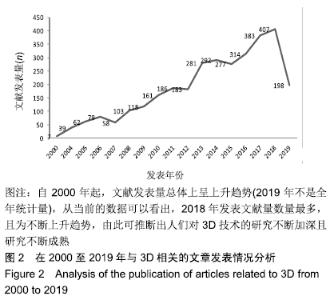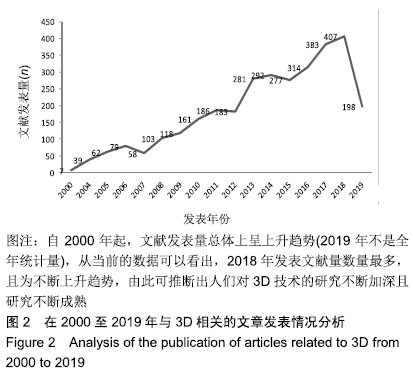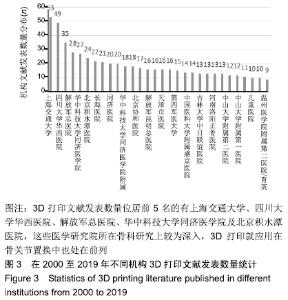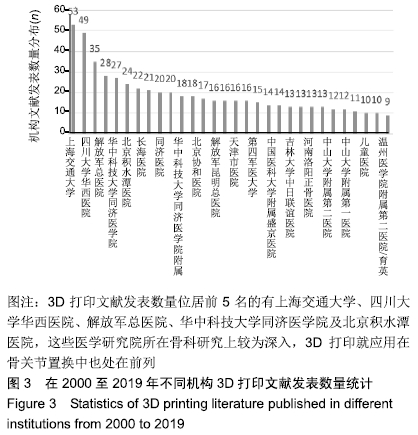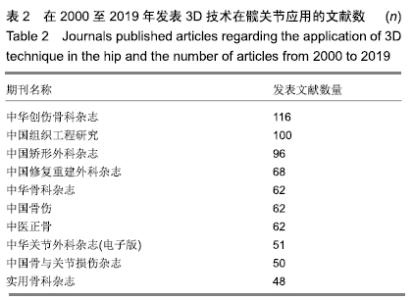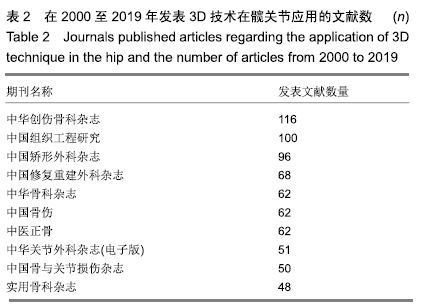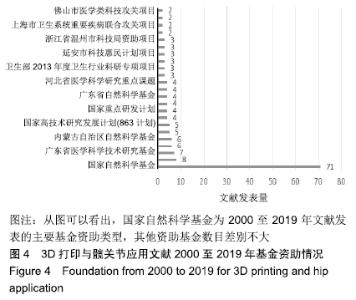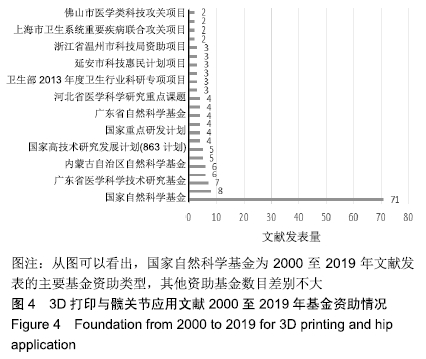Chinese Journal of Tissue Engineering Research ›› 2020, Vol. 24 ›› Issue (9): 1324-1330.doi: 10.3969/j.issn.2095-4344.2496
Previous Articles Next Articles
Application value of 3D printing guide plate in SuperPATH technology for elderly hip arthroplasty: retrospective study and evidence analysis of literature retrieval
Zhao Weibiao, He Ziwei, Li Ji, Li Yi
- Department of Orthopedic Surgery, Liaoning Jinqiu Hospital, Shenyang 110016, Liaoning Province, China
-
Received:2019-09-29Revised:2019-09-30Accepted:2019-10-10Online:2020-03-28Published:2020-02-11 -
Contact:Zhao Weibiao, Department of Orthopedic Surgery, Liaoning Jinqiu Hospital, Shenyang 110016, Liaoning Province, China -
About author:Zhao Weibiao, Department of Orthopedic Surgery, Liaoning Jinqiu Hospital, Shenyang 110016, Liaoning Province, China -
Supported by:the Population and Health Applied Technology Research Project of Shenyang, No. 18-014-4-37
CLC Number:
Cite this article
Zhao Weibiao, He Ziwei, Li Ji, Li Yi. Application value of 3D printing guide plate in SuperPATH technology for elderly hip arthroplasty: retrospective study and evidence analysis of literature retrieval[J]. Chinese Journal of Tissue Engineering Research, 2020, 24(9): 1324-1330.
share this article
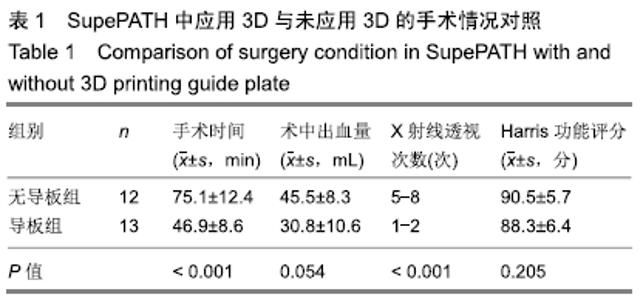
2.1 回顾性分析结果 患者25例均获得随访,随访时间平均5.8(5-7)个月,末次随访时导板组髋关节功能Harris评分为(90.5±5.7)分,未用导板组为(88.3±6.4)分,2组差异无显著性意义(P=0.205)。 导板组股骨假体柄中立位12例,内翻位1例;无导板组假体柄中立位9例,内翻位3例,外翻位1例,25例均获得随访,随访时间平均5.8(5-7)个月。导板组手术时间、术中导板组手术时间为(46.9±8.6) min,无导板组为(75.1±12.4) min,导板组手术时间少于无导板组(P < 0.001)。导板组术中出血量为(30.8±10.6) mL,无导板组为(45.5±8.3) mL,2组差异无显著性意义(P=0.054)。导板组术中X射线透视次数为一两次,无导板组为5-8次,导板组术中X射线透视次数少于无导板组,差异有显著性意义(P < 0.001),见表1。 "
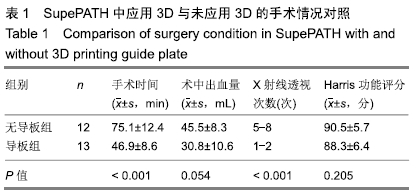

2.2.5 3D打印技术在人工髋关节置换上的应用现状 3D打印技术在计算机辅助下进行术前规划,模拟术中操作最佳位置,制定个体假体,进行手术复位,与传统消材、减材相反,3D打印技术是在三维数字模型的基础上采用逐层制造将材料堆积起来的新型技术[9]。3D打印技术目前在关节置换术上如股骨转子间骨折治疗,髋臼骨折,髋膝关节翻修术都具有一定的应用价值。有研究收集了南方医科大学南方医科大学南海医院2014年3月10日至2016年3月10日就诊的90例股骨转子间骨折患者资料[10],按照术前未给予3D打印技术(常规组),术前给予3D打印技术(试验组)进行分组,通过两组的手术时间,术中出血量,术后引流量和透视次数进行对比,研究结果显示,试验组患者的手术耗时相比常规组明显更短,术中出血量及术后引流量明显少于常规组,由此得出3D打印技术在股骨转子间骨折治疗中具有应用价值。张育民等[11]研究团队收集86例髋臼骨折患者,按照到院就诊顺序分组,3D组(43例,单数序号)采用3D打印技术辅助诊断与手术治疗,传统组(43例,双数序号)采用传统手术治疗方法,同样按照手术时间、术中出血量、术后引流量和透视次数进行对比,得出数据如表3所示,研究结果显示3D组的手术时间、术中出血量及术后引流量明显少于传统组,由此可进一步表明3D打印技术应用于髋臼骨折患者的诊治,可缩短手术时间、减少术中出血量及术后引流量,使手术操作更加精准,有效促进术后肢体功能的恢复,3D打印在髋臼骨折也具有应用价值。 "


常规的髋关节置换初次置换术后由于假体松动、假体周围感染、假体周围骨折及聚乙烯磨损引起的骨缺损严重影响着患者的预后,需要翻修的患者也逐渐增加。在关节翻修中也会遇到一系列难题:如骨缺损处理、术前规划及个性化假体需求等,而3D技术一定程度上可以解决这些问题,在髋膝关节的翻修中,可以为患者量身定制个性化模型,并明确假体型号,进行术前规划,减少翻修后出现并发症的可能。有研究团队对此进行了深入调查,分别从髋关节翻修的原因、翻修中出现的问题、3D打印技术的应用逐次探讨,分别从骨缺损、模型规划、个性化假体、周围假体骨折上分析了3D的应用价值,并对3D打印在髋关节翻修的应用前景上做出推断[12]。 通过文献分析得出3D打印在髋关节损伤的治疗手术上具有应用价值,那么其在先天髋关节发育不良的髋关节置换手术具有应用价值吗?先天性髋臼发育不良主要是由于胚胎发育过程中髋臼软骨等发育出现异常,造成髋臼壁对股骨头的骨性包容相对较少,导致股骨头缺乏应力刺激,引起髋关节功能障碍[13]。同时,患者发病早期如不采取及时的治疗将会引起肢体短缩及跛行等[14-15],与股骨颈骨折相比,其先天骨质的特殊性为髋关节置换带来了一定困难。有研究选取了长海医院骨关节外科2015年1月至8月收治的80例成人先天性髋臼发育不良患者资料进行分析,依据是否采用3D辅助治疗进行分组,得出采用3D技术辅助治疗组的优良率为87.5%,高于未采用3D技术组的优良率67.5%(P < 0.05)[13]。3D技术的精准定位对于先天髋臼骨发育不良导致的关节功能障碍,在进行全髋关节置换上具有一定的优势。 3D打印技术为骨科手术的精准治疗提供了全新的方法,通过文献分析得出,采用3D技术治疗的髋关节手术,不论是骨损伤造成的股骨转子间骨折治疗、髋臼骨折或髋骨置换翻修,还是先天的髋臼骨发育不良的全髋关节置换,手术效果都要比未采用3D技术的手术效果要好,说明3D打印技术在髋关节置换中具有一定的应用价值。 3D打印技术以及手术的精准性,对于假体材料选择的实用性、型号的匹配性、手术带来的创伤及术后恢复周期上都具有一定优势,这些优势使得3D打印技术在老年髋关节置换中更具备价值。有研究团队收集了2014至2017年12月期间南方医科大学第三附属医院创伤骨科收治的52例老年髋臼骨折病患资料,术前应用3D打印技术打印髋臼模型,在体外模拟手术[16];采用腹直肌外侧入路复位骨折后用术前预弯的重建钢板或定制髋臼翼状接骨板进行固定,记录患者术后骨折复位质量、骨折愈合时间、患髋功能及并发症发生情况等。患者的手术时间为85-138 min,平均102 min;术中出血量为280-750 mL,平均520 mL;围术期无患者发生重建钢板、定制髋臼翼状接骨板及螺钉松动、伤口感染、症状性下肢深静脉血栓形成等并发症;术后骨折复位质量按Matta评分标准评定:优40例,良7例,差5例,优良率为90.4%。有研究团队析收集了32例2014年1月到2017年12月在广州中医药大学顺德医院采用3D打印技术联合腹直肌外侧切口治疗的髋臼骨折患者资料,年龄17-65岁,平均年龄为39.59岁,记录患者手术时间、术中出血量、切口长度、骨折暴露时间(从切开皮肤到暴露髋臼骨折时间)[17];手术时间(148.0±44.82) min,术中出血量(445.31±194.42) mL,切口长度(7.88±1.29) cm,骨折暴露时间(13.50±2.71) min;按Matta影像学标准评价患者骨折复位情况:优15例,良12例,优良率84.38%。从优良率上来看,除去手术技术水平等因素,患者年龄是两个团队最大的区分因素,老龄患者手术的优良率要高于成年患者,说明3D打印技术应用在髋关节置换中对老年人更为适用[16-17]。老年人本身体质及恢复状况相对于成年人要差一些,3D打印技术能进行术前模拟,选取合适的假体,减少了出现并发症的概率及手术失败的风险,更有利于老年人的术后恢复,提升老年人的生活质量。 2.2.6 适用老年人的髋关节置换方式 在手术实施路径上,许多专家的临床经验证实,前方入路方式是具有一定的优势的实施路径,目前较为常用的是后外侧入路。但后外侧入路造成的创伤大,术后并发症出现率高。SuperPATH是经传统的后侧入路改良而来,它保留传统后侧入路的优势并进行进一步延伸,具有不切断肌肉和肌腱、更少的软组织损伤、更快的术后恢复、更少的出血及术中灵活改变入路等优点,更加符合目前“快速康复”的理念[18]。SuperPATH入路结合了经关节囊上部的SuperCap入路和经皮辅助通道的PATH入路的优点[19],被称为“不会因手术入路导致脱位”的髋关节置换技术[20-22]。SuperPATH手术切口长8-10 cm,创伤小、术中出血量少,可减轻置换后疼痛,使得微创髋关节置换得到迅速发展[23-26]。许多专家学者在临床研究上进行SuperPATH与传统入路方式的对照,有研究通过收集2015年9月至2017年3月期间爱得堡医院骨科收治的老年单侧股骨颈骨折患者39例资料[27],根据手术方法分为2组:SuperPATH入路组(n=14)和后外侧入路组(n=25),对比2组患者的手术时间、术中出血量、术后引流量及术后24 h内目测类比评分等围术期参数。得出的结果为:与后外侧入路组患者相比,SuperPATH入路组患者的术中失血量[(101.4± 16.7) mL vs. (135.3±21.6) mL]和术后引流量[(70.4± 10.2) mL vs. (85.9±16.4) mL]更少、切口长度更小[(6.8± 0.7) cm vs. (10.1± 0.9) cm]、目测类比评分更低。韩晓飞[28]研究团队进行了SuperPATH与Moore入路对比分析,经一系列数据对比得出Superpath与Moore入路均安全有效,前者创伤更小,早期可有效缓解疼痛,有利于患者术后康复。孙彦平团队[18]通过对析60例2015年12月至2016年12月行全髋关节置换患者的完整临床资料的回顾分析,也得出了SuperPATH髋置换治疗效果更好,可显著减轻患者的疼痛程度,改善其髋关节功能的结论,见表3。 以上几个团队的临床试验都反映出SuperPATH技术与传统入路方式的髋关节手术先比具有疼痛轻,术后恢复快的优势[18,27-28]。这种微创手术对于老年髋关节骨折患者具有很大价值,老年人身体功能退化,手术恢复时间长,恢复慢,对疼痛的忍耐力要差。而SuperPATH手术切口要 比传统入路方式小,不切断外旋肌群,置换后髋关节功能恢复快,种种的优势表明SuperPATH是一种更适合老年人髋关节置换术的微创手术。 "

| [1] 于辰曦,孙水.3D打印技术在髋、膝关节置换中的应用进展[J].山东医药,2017,57(32):104-106. [2] 黄成校,陈虎,高超,等.骨水泥型双极人工股骨头置换术对高龄股骨颈骨折的疗效观察[J].医学综述,2016,22(6):1195-1197. [3] 钟璐颖,罗秋双,谢娜,等.递进式目标护理在股骨颈骨折术后功能康复训练中的应用[J].实用临床医药杂志,2016,20(4):56-58. [4] 李伟龙,余霄,庞清江.股骨颈骨折内固定术后股骨颈短缩的相关研究进展[J].中华骨科杂志,2016,36(6):378-384. [5] 陈戎波,王仁,李小建,等.改良前外侧入路对老年股骨颈骨折行髋关节置换术的安全性分析[J].中国骨与关节损伤杂志,2014, 29(4):376-377. [6] 吴良浩,禹宝庆,陈帆成.SuperPATH 微创入路人工股骨头置换治疗老年股骨颈骨折:前瞻性、开放性、随机对照临床试验[J].中国组织工程研究,2017,21(7):1009-1014. [7] 邓翔天,刘俊才,李忠,等.侧卧位直接前方入路与后外侧入路行全髋关节置换术的疗效分析[J].实用骨科杂志,2018,24(8): 692-700. [8] 张吉红,王晓娟,刘义,等.前外侧入路微创全髋关节置换对 股骨颈骨折愈合及疼痛的影响[J].创伤外科杂志,2018,20(11): 840-844. [9] 李戈,杨礼庆,李岩.3D打印技术在人工髋关节置换中的应用现状及前景[J].中国骨与关节杂志,2018,7(12):937-941. [10] 熊敏剑,唐理英,莫世奋,等.3D打印骨折模型在股骨转子间骨折治疗中的应用价值[J].中国医药科学,2018,8(12):10-13. [11] 程辉光,张育民,段宁,等.3D打印技术在髋臼骨折患者诊治中的应用效果及对肢体功能的影响研究[J].河北医科大学学报,2018, 39(2):164-170. [12] 赵畅,曾参军,蔡道章,等.髋膝关节翻修术中的关键问题及3D打印应对之策[J].中华关节外科杂志(电子版),2017,11(3): 284-288. [13] 邵正海,徐卫东.计算机辅助技术评价成人髋臼发育不良全髋关节置换生物性能分析[J].中国组织工程研究,2016,20(4): 554-558. [14] BOZEK M, BIELECKI T, NOWAK R, et al. Arthroplasty in patients with congenital hip dysplasia-early evaluation of a treatment method. Ortop Traumatol Rehabil. 2012;15(1): 49-59. [15] LI H, WANG L, DAI K, et al. Autogenous impaction grafting in total hip arthroplasty with developmental dysplasia of the hip. J Arthrop. 2013;28(4):637-643. [16] 李涛,汪灿彬,麦奇光.等.腹直肌外侧人路结合术前3D打印技术治疗老年髋臼骨折[J].中华创伤骨科杂志,2019,21(6):516-523. [17] 李永军,陈棉智,张志辉.等.3D打印技术联合腹直肌外侧入路手术治疗髋臼骨折[J].创伤外科杂志,2019,21(2):99-102. [18] 孙彦平,刘月坤,崔晓亮,等.Superpath全髋置换与全髋关节置换术的疗效、疼痛程度及髋关节功能分析[J].中华骨与关节外科杂志,2017,10(4):305-307. [19] 黄钢勇,夏军,魏亦兵,等.SuperPATH入路髋关节置换术治疗高龄老年股骨颈骨折短期临床疗效[J].国际骨科学杂志,2016, 37(5):331-336. [20] CHOW J, PENENBERG B, MURPHY S. Modified micro-superior percutaneously assisted total hip: early experiences & case reports. Curr Rev Musculoskelet Med. 2011;4(3):146-150. [21] PENENBERG BL, BOLLING WS, RILEY M. Percutaneously assisted total hip arthroplasty (PATH): a preliminary report. J Bone Joint Surg Am. 2008;90:209-220. [22] CAPUANO N, DEL BUONO A, MAFFULLI N. Tissue preserving total hip arthroplasty using superior capsulotomy. Oper Orthop Traumatol. 2015;27(4):334-341. [23] 张涵,员晋,兰海.SuperPATH微创髋关节置换术治疗老年股骨颈骨折[J].中华创伤骨科杂志,2018,20(5):400-406. [24] 车先达,韩鹏飞,顾晓东,等.全髋关节置换SuperPATH与传统后侧入路疗效差异的Meta分析[J].中国组织工程研究,2019, 23(24):3901-3908. [25] KENNON R, KEGGI J, ZATORSKI LE, et al. Anterior approach for total hip arthroplasty:beyond the minimally invasive technique. J Bone Joint Surg Am. 2004;86(A Suppl 2):91-97. [26] LI J, XIAO J, ZHANG Z, et al. A novel fast mobile-window small incision technique for hip arthroplasty in the elderly and comparison with conventional incision. Med Sci Monit. 2017; 23;3303. [27] 吴国华,狄勇,马英华,等.SuperPATH入路半髋关节置换术治疗老年股骨颈骨折临床短期疗效[J].中华老年多器官疾病杂志, 2018,17(7):529-532. [28] 韩晓飞,孙振中,顾三军,等.SuperPATH与Moore入路全髋关节置换术治疗老年股骨颈骨折早期疗效比较[J].创伤外科杂志,2018, 20(10):730-734. [29] 黄文文,尹东,黄宇,等.SuperPATH和前外侧小切口入路THA 的短期疗效比较[J].实用骨科杂志,2018,24(7):593-604. [30] 施俊峰,王晓东,万宏来,等.SuperPATH与直接前方入路微创全髋关节置换学习阶段的结果比较[J].中国微创外科杂志,2019, 19(5):435-454. [31] 贾建波,禹宝庆,吴良浩,等.传统后路与微创SuperPATH入路的半髋置换治疗老年股骨颈骨折疗效比较[J].中华老年骨科与康复电子杂志,2017,3(4):223-231. |
| [1] | Zhang Tongtong, Wang Zhonghua, Wen Jie, Song Yuxin, Liu Lin. Application of three-dimensional printing model in surgical resection and reconstruction of cervical tumor [J]. Chinese Journal of Tissue Engineering Research, 2021, 25(9): 1335-1339. |
| [2] | Wei Wei, Li Jian, Huang Linhai, Lan Mindong, Lu Xianwei, Huang Shaodong. Factors affecting fall fear in the first movement of elderly patients after total knee or hip arthroplasty [J]. Chinese Journal of Tissue Engineering Research, 2021, 25(9): 1351-1355. |
| [3] | Zhang Chong, Liu Zhiang, Yao Shuaihui, Gao Junsheng, Jiang Yan, Zhang Lu. Safety and effectiveness of topical application of tranexamic acid to reduce drainage of elderly femoral neck fractures after total hip arthroplasty [J]. Chinese Journal of Tissue Engineering Research, 2021, 25(9): 1381-1386. |
| [4] | Zeng Yanhua, Hao Yanlei. In vitro culture and purification of Schwann cells: a systematic review [J]. Chinese Journal of Tissue Engineering Research, 2021, 25(7): 1135-1141. |
| [5] | Kong Lingbao, Lü Xin. Effect of implant selection and approach on support in the operation of posterolateral tibial plateau fractures [J]. Chinese Journal of Tissue Engineering Research, 2021, 25(6): 942-947. |
| [6] | Xu Dongzi, Zhang Ting, Ouyang Zhaolian. The global competitive situation of cardiac tissue engineering based on patent analysis [J]. Chinese Journal of Tissue Engineering Research, 2021, 25(5): 807-812. |
| [7] | Wu Zijian, Hu Zhaoduan, Xie Youqiong, Wang Feng, Li Jia, Li Bocun, Cai Guowei, Peng Rui. Three-dimensional printing technology and bone tissue engineering research: literature metrology and visual analysis of research hotspots [J]. Chinese Journal of Tissue Engineering Research, 2021, 25(4): 564-569. |
| [8] | Chang Wenliao, Zhao Jie, Sun Xiaoliang, Wang Kun, Wu Guofeng, Zhou Jian, Li Shuxiang, Sun Han. Material selection, theoretical design and biomimetic function of artificial periosteum [J]. Chinese Journal of Tissue Engineering Research, 2021, 25(4): 600-606. |
| [9] | Liu Fei, Cui Yutao, Liu He. Advantages and problems of local antibiotic delivery system in the treatment of osteomyelitis [J]. Chinese Journal of Tissue Engineering Research, 2021, 25(4): 614-620. |
| [10] | Li Xiaozhuang, Duan Hao, Wang Weizhou, Tang Zhihong, Wang Yanghao, He Fei. Application of bone tissue engineering materials in the treatment of bone defect diseases in vivo [J]. Chinese Journal of Tissue Engineering Research, 2021, 25(4): 626-631. |
| [11] | Zhang Zhenkun, Li Zhe, Li Ya, Wang Yingying, Wang Yaping, Zhou Xinkui, Ma Shanshan, Guan Fangxia. Application of alginate based hydrogels/dressings in wound healing: sustained, dynamic and sequential release [J]. Chinese Journal of Tissue Engineering Research, 2021, 25(4): 638-643. |
| [12] | Chen Jiana, Qiu Yanling, Nie Minhai, Liu Xuqian. Tissue engineering scaffolds in repairing oral and maxillofacial soft tissue defects [J]. Chinese Journal of Tissue Engineering Research, 2021, 25(4): 644-650. |
| [13] | Xing Hao, Zhang Yonghong, Wang Dong. Advantages and disadvantages of repairing large-segment bone defect [J]. Chinese Journal of Tissue Engineering Research, 2021, 25(3): 426-430. |
| [14] | Liu Jianyou, Jia Zhongwei, Niu Jiawei, Cao Xinjie, Zhang Dong, Wei Jie. A new method for measuring the anteversion angle of the femoral neck by constructing the three-dimensional digital model of the femur [J]. Chinese Journal of Tissue Engineering Research, 2021, 25(24): 3779-3783. |
| [15] | Wang Yihan, Li Yang, Zhang Ling, Zhang Rui, Xu Ruida, Han Xiaofeng, Cheng Guangqi, Wang Weil. Application of three-dimensional visualization technology for digital orthopedics in the reduction and fixation of intertrochanteric fracture [J]. Chinese Journal of Tissue Engineering Research, 2021, 25(24): 3816-3820. |
| Viewed | ||||||
|
Full text |
|
|||||
|
Abstract |
|
|||||
